At our most recent Grant Writing Made Easy workshop, we did a deep dive into nonprofit program budgets.
Of all the topics I teach inside the course, the budget is the one that students have the most anxiety and confusion around.
(By the way, if you’re not a member of GWME, you should get on the waitlist to get updated when enrollment opens!)
So this week, I want to share some advice that will help you crack the code on nonprofit program budgets.
Understand the key terms
One of the best things you can do to get more comfortable with budgets is to get clear on the budget key terms.
Not being familiar with the vocabulary surrounding budgets is one of the biggest barriers to doing them and doing them well.
These are some of the most common terms you’ll see on program budget forms:
Direct Expenses: These include all the costs associated with the program. Within direct expenses, there are many categories, which I’ll cover below.
Indirect Expenses: These include administrative and overhead costs, all the costs of all departments outside of the program department, such as finance, human resources, and development.
Revenue: All the funding coming in that you’re allocating to the program. As with expenses, you don’t want to lump these all together in one line item. Rather, separate them out, at least by category of revenue – other grants, donors, and fundraising or annual giving. Depending on the budget form requirements, you may need to break these into more detailed line items, separating funding from different grantmakers into their own line items, for example.
As I said, there are categories within direct expenses, which depending on the budget form requirements, you may need to separate your expenses into.
The most common are:
Personnel Services (PS): Includes the expenses of any part-time or full-time staff, associated with your program. This can and should include the portion of time staff members dedicate to that program, if their time is split among several programs or between this program and administrative work.
Fringe Benefits: This includes the cost of benefits given to personnel of the program, such as, health insurance, paid time off, pension, etc. Fringe benefits should be listed on a separate line from salaries.
Other than Personnel (OTPS): All expenses outside of personnel costs and fringe benefits, including the following:
- Consultants
- Training
- Equipment
- Rental
- Supplies
- Meeting Expenses
- Travel

Follow this 3-step process for creating nonprofit program budgets
Step 1: Adhere to the requirements
Some grantmakers will require you to fill out a budget form they provide, while others will ask you to create and submit one of your own.
The key in either case is to follow their directions closely. For example, if they ask for matching funds, include those. If they don’t allow certain types of expenses or for certain categories of expenses to surpass a given percentage of the total request, ensure you stay within those requirements.
Step 2: Estimate expenses and revenue
Grantmakers expect your budget to be thorough, reasonable, and provide enough funding for what you claim you will do. They also expect that they are not funding your entire project.
Remember that grantmakers want you to pay your staff and consultants a fair price, not an extravagant one. As you estimate expenses and revenue give yourself some wiggle room in your estimates without hugely overestimating. The best practice for making estimates is to track your revenue and expenses closely so you can make a justified estimate.
Don’t be afraid to consult with the grantmaker regarding their expectations for the budget and to benchmark your expenses by talking with others in your field who have done similar work. Also, if you need to hire consultants or make major purchases get quotes on those expenses rather than guessing how much they will cost.
The revenue section is not limited to revenue you already have, but also the revenue you anticipate you will have during the time period of the grant award. So in this section, you can include both the funding you have already secured as well as the funding you are actively seeking out and hope to receive.
Step 3: Make calculations
Some federal grants require complicated calculations, especially when they require matching funds. For smaller grants, the most common thing you’ll be asked to do in terms of calculations is to make sure your program revenue and expenses cancel out. Sometimes the provided forms will tell you if they don’t cancel out and other times you will be using your own form and will have to make sure they cancel out. Canceling out means your expenses equal your revenue.
Once you have made your calculations, check, double-check, and triple-check them. I recommend using Excel to do your calculations so there is less room for error.
And then don’t just check your calculations; check that every activity or strategy you mention in your proposal is included/represented in your budget.
Your next steps
As I mentioned, sometimes grantmakers will have budget forms they want you to fill out, but it’s still best practice to keep budgets on file for all of your programs. This way you can quickly pull information from these when you find a grant you want to apply for. If you don’t have these already, your next step is to begin working on them! Just follow the 3 steps I outlined above to get started.
In addition to program budgets, I recommend creating a standard grant narrative for each of your programs. This is what we do for our retainer clients and what we teach Grant Writing Made Easy members to do.
If you’re not a member yet, join the waitlist today!







